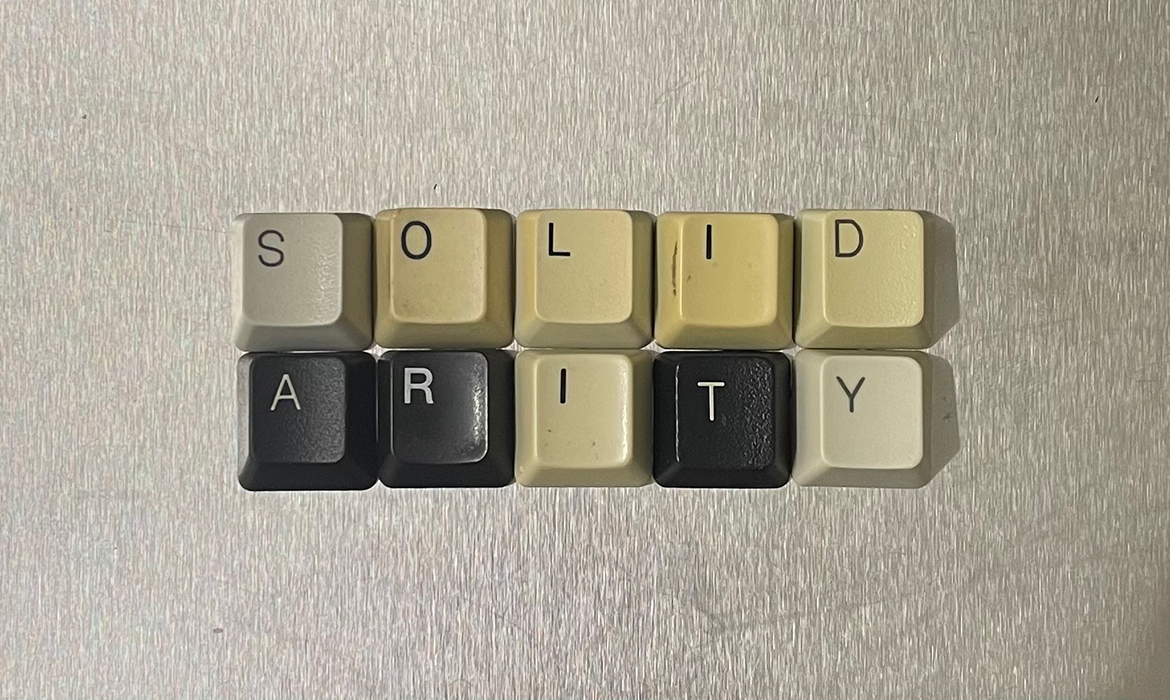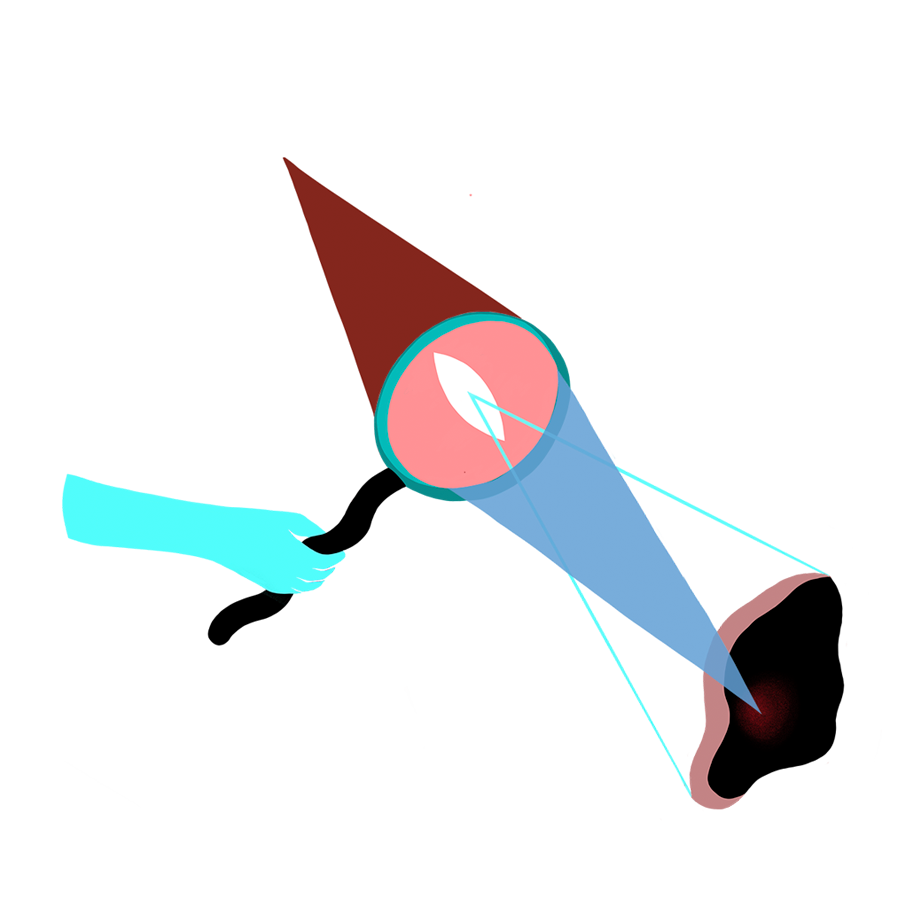Various Faces of Solidarity — An interview with Nike Jonah
Nike Jonah is a research fellow with the Royal Central School of Speech and Drama at University College London and is also the lead for the Pop Culture and Social Change initiative at Counterpoint Arts. She engages in questions of strategic development in the cultural sector and across creative industries. In the context of RESHAPE, she was the facilitator of the solidarity economies trajectory, where questions of how art and cultural projects can be supported for their potential and not for where they are coming from have been raised. In this conversation, we address how the concept of solidarity funding was unpacked, and how the different projects and prototypes potentially manifesting it emerged.
[Lina Attalah] Let’s start with how solidarity economies was debated and the kind of reshaping that emerged in this discussion. What does solidarity economies speak to and what is it a reaction to?
[Nike Jonah] We grappled with this question for some time, especially given the diversity of the Reshapers, with those coming from Tunisia and Russia and all that happens in between in Europe. We struggled a lot before we agreed on a list of areas we wanted to address.
Impressions of social solidarity and solidarity funding, and how you can have the two notions of solidarity and funding together, included people who have a vision or an objective and are calling together for funding and resources to realise this ambition. For some, it entailed giving up privilege, giving up something to someone, as you have to be part of the struggle. Some had a very left-wing understanding of solidarity and what it means to be in solidarity. For me, part of solidarity is about recognition and acknowledgement. In Covid-19 times, we showed solidarity in England by applauding NHS workers, but we didn’t say anything to people working every day in the supermarket. I make it a point to say ‘thank you’ as a way of recognising and valuing their effort and acknowledging it to them.
Diversity and equality came up too. When I turned up in the first RESHAPE meeting, I looked around and found that I was the darkest person in the room. There were people from Tunisia, Morocco and Palestine, so we had the Middle Eastern/Arab representation but we didn’t have any Caribbean or African representation, and I was a facilitator, not a Reshaper. I was concerned that there would be a gap in terms of the voices from those communities. Additionally, we didn’t have representatives of refugees, or of physical disability, which would have brought different viewpoints to the conversation. It was problematic that some of the very people who are marginalised weren’t part of the conversation through which we were trying to fix the issue of marginalisation. It could have been very interesting to include a number of groups in Europe who are marginalised, and they are numerous. Otherwise, we get more of what we already know. I work a lot on equality and diversity with people on the margins and they tend to have the better overview and standpoint of what’s going on because their position in margins gives them a comprehensive overview.
[LA] You worked on a manifestoThe Solidarity Economies group gathered around an as yet unwritten Solidarity Manifesto that advocates democracy and defends the access to culture as a human right; aims at changing acquired attitudes in the art and the cultural market; supports the mobilisation and sharing of resources amongst disciplines and countries; stands against the privatisation and monetisation of culture; unites the forces against precarious life conditions of artists and cultural workers, against the coalitions of neoliberalism and authoritarian regimes. with the Reshapers. Can we look into what discoveries and epiphanies have emerged from this specific space?
[NJ] We did a manifesto when we met in Kiev, covering ten points. Managing the process was a challenge, because we needed to manage oppositional viewpoints.
We had a diverse context of wealthy European states that have arts and cultural subsidies and Middle Eastern ones where there is no government funding that is not tied to politics. Some have limited options to fund the arts and therefore have to pursue commercial routes or a mixed economy route. The manifesto was an attempt to speak to these very different scenarios across the creative cultural industries and to think about examples of solidarity. There were a lot of different examples of what solidarity can look like, and the practical steps through which it can manifest.
It was also a discursive way of addressing the questions at hand, rather than going for actual solutions and schemes. Some of these solutions were there in some of the prototypes, such as the solidarity tax. But the manifesto was more of a discursive approach, a process of political making. Security and diversity were its main pillars. The idea behind the manifesto was to set some principles we agreed on to ensure that there is solidarity in the way we approached an alternative support infrastructure. We also thought it was important to clarify everyone’s roles and responsibilities. Finally, when looking at the different prototypes that could come out, we thought that we needed something to anchor our thinking, as a way forward. We thought the manifesto underpinned the thinking for the other prototypes.
There were all these intersections between the different prototypes and the manifesto. One of the prototypes for example was a social network and the Reshapers Anastasya Kilisova and Ekmel Ertan’s idea behind it was to document shared resources as a way to mobilise change. The manifesto addressed the idea of network resources and accordingly, there were these parallels. These parallels were also found in the fieldnotes guides, which were about recognising and unpacking solidarity, and also acknowledging the shift and change that people have to go through according to how they operate.
[LA] Can you tell us about the solidarity tax?
[NJ] Doreen Toutikian, the Reshaper who came up with it, was thinking something very different where people have to give up something, such as some of their funding to support others who don’t have access to funding because they aren’t European.
I work with refugee and migrant spaces in the UK, and with consortium-funded projects. There are a lot of people who want to contribute in the best way they can. And this is why the solidarity tax is a way to go. For one, the funders of RESHAPE grabbed the idea and expanded it, wanting to back it, as it was a brilliant idea.
The idea is to go to the big Creative Europe type funding and ask organisations to give up a percentage and to create a system of distribution to people not targeted by the funding call. This takes into account that funding money often responds to a political agenda, and ticks a box of a political purpose. Cultural funding is often a mechanism whereby governments can promote their core values.
The way Doreen conceived the solidarity tax scheme is through gamification, where she developed a whole model.
[LA] Gaming was in fact a major prototype in your trajectory, and a place of intersection between the different prototypes, right?
[NJ] Every prototype was responding to an issue, while the gaming was really an umbrella, a catcher, where we unpacked in each prototype what the issues were that we were trying to fix. The idea was to create a template for developing a gaming module for each prototype. For the solidarity tax, for example, it was a module through which we asked how to debate this issue. The same went for resource mobilisation. These are the things the cultural sector needs to think about and if you didn’t need to think about them before Covid-19, you need to do so now.
The gaming workshop was the product of a combination of three Reshapers’ experiences: Doreen Toutikian, Anikó Rácz, and Dorota Ogrodzka. One was a designer, teaching design and all about design thinking. The second was a coach, working on developing an artistic voice for the market. And the third was a thinker and critic, using theatre methods to extract information from people in a trustworthy way. This combination was really powerful. They could see how games could encompass opportunities for learning. They were also keen to see the gaming evolve in different ways, and beyond the RESHAPE project.
The great thing also is that they thought about people who don’t have much. If you don’t have electricity, you can still access the workshop as long as you download the tools at some point. This is very relevant if you are in Africa, or even in Palestine, Tunisia, or Morocco.
Gaming is one of the fastest growing sectors, clearly because of how impactful it is. And with the lockdown we have seen experiences of festivals where people interacted through gaming tools, using avatars to navigate the various festivals’ experiences. It is a very playful tool that can also keep us connected especially with Covid-19 when we can’t physically be together and where Zoom makes us feel sometimes like we are square boxes.
Gaming is also a very monied space, that can be intimidating to people outside it. The workshop, in that sense, was quite enabling.
[LA] What about the social network prototype?
[NJ] The social network was blended with the ArtBnB prototype. One of the Reshapers. Ouafa Belgacem, had an idea about resource mobilisation, as we weren’t all coming from the same background. In Africa, for example, you have to look at art in a different way, as the landscape is far more precarious, not just the cultural one but also the political one. Questions of livelihoods are crucial. This social network was trying to articulate that.
What I like about resource mobilisation and networks specifically is that everyone recognises that both bring value. Value can be access to certain communities, lived experiences, or a certain intelligence because of an overview you have thanks to your position, navigating different spaces. Resource mobilisation is about how to value the full ecology of the cultural sector, navigating mainstream spaces as well as the margins.
[LA] There was also a residency prototype. Can you walk us through it?
[NJ] The residency idea was similar to the idea behind ArtBnB, where you let out a couch or a room or an entire house that you have. The idea was the monetisation of space. A lot of art spaces, venues, and cultural organisations have space; a studio space, or a living space that can be a residency space. We would set up a residency system whereby people who are travelling and want to contribute to cultural organisations as a form of solidarity would use their spaces and pay them money instead of staying in hotels. They can use the studio space, or go for an art class, and so on. There was also the idea of paying for experience, which can be provided by cultural organisations. The money from the ArtBnB is meant to go to a mobility fund for artists based in places where support is lacking, as well to marginalised groups and communities within Europe and beyond.
This text is licensed under the Creative Commons Attribution-ShareAlike 4.0 International License.




